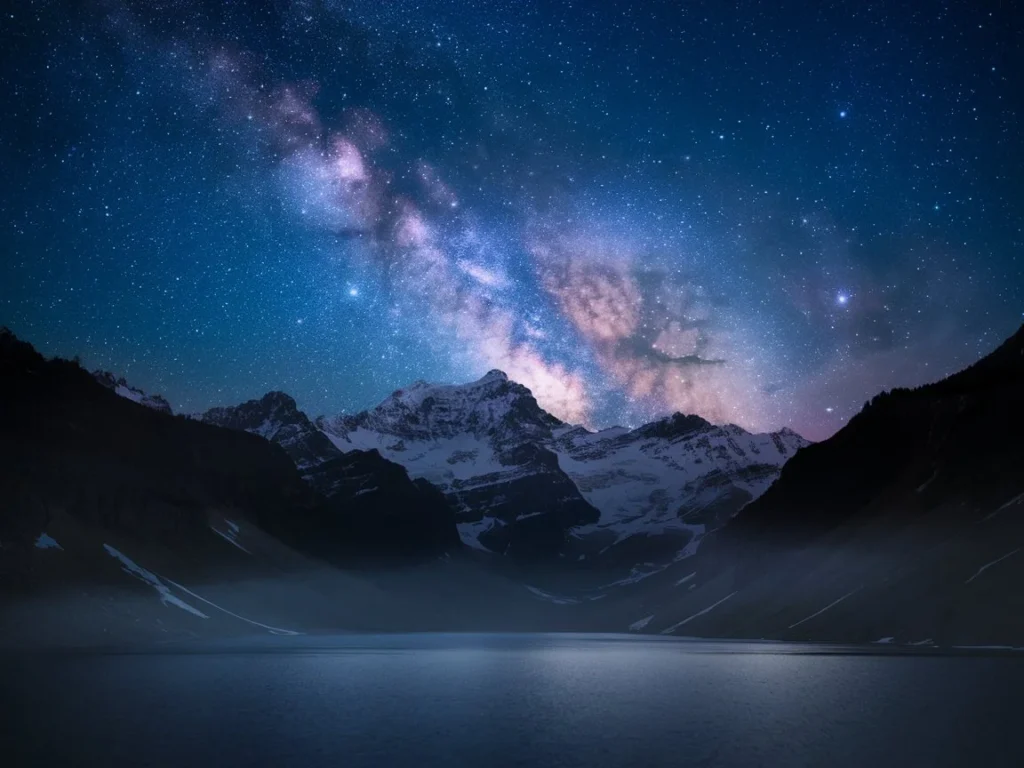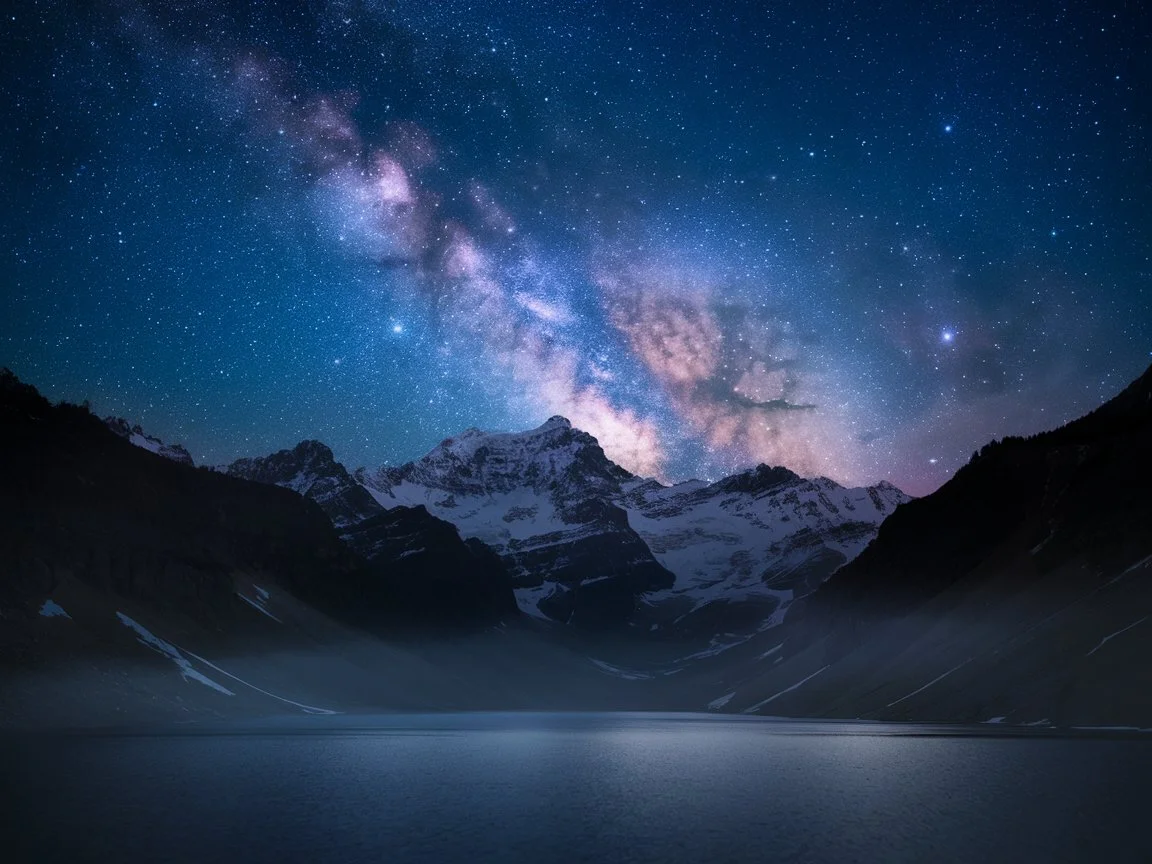
Introduction
Stargazing in the mountains is a magical experience that offers a rare opportunity to connect with the universe. Far from the glare of city lights, mountain skies reveal a breathtaking tapestry of stars, planets, and celestial phenomena. The crisp, clear air and high altitudes of mountain regions provide some of the best conditions for observing the night sky, making it a favorite activity for astronomers, photographers, and nature lovers alike.
The experience of lying under a canopy of stars, surrounded by the quiet majesty of the mountains, is both humbling and awe-inspiring. Whether you’re spotting constellations, watching a meteor shower, or capturing the Milky Way with your camera, stargazing in the mountains is an unforgettable adventure. This guide will take you through the best locations, essential gear, and tips for making the most of your stargazing experience. So grab your telescope, bundle up, and prepare to explore the wonders of the night sky.
1. Best Mountain Locations for Stargazing
The mountains are home to some of the darkest and clearest skies on Earth. Here’s where to go for the best stargazing experience:
- Dark Sky Reserves:
- These are designated areas with minimal light pollution, offering unparalleled views of the night sky.
- Example: The Central Idaho Dark Sky Reserve is one of the largest in the U.S., providing pristine conditions for stargazing.
- High-Altitude Viewing Spots:
- Higher elevations offer clearer skies due to thinner air and reduced atmospheric interference.
- Example: Mauna Kea in Hawaii, home to world-renowned observatories, is a prime high-altitude stargazing location.
- Seasonal Considerations:
- Summer: Warm nights and clear skies make summer ideal for stargazing.
- Winter: Crisp, cold air enhances visibility, and winter constellations like Orion are stunning.
2. Essential Stargazing Gear
Having the right equipment enhances your stargazing experience.
- Telescope vs. Binoculars:
- Telescopes: Offer detailed views of planets, moons, and deep-sky objects.
- Binoculars: Portable and easy to use, ideal for beginners and wide-field views.
- Apps & Star Maps:
- Use apps like SkySafari or Stellarium to identify stars, planets, and constellations.
- Comfort Items:
- Bring a blanket, reclining chair, and warm clothing to stay cozy during long observation sessions.
3. What to Look for in the Night Sky
The night sky is filled with wonders waiting to be discovered.
- Constellations & Star Clusters:
- Orion: Easily recognizable with its three-star belt.
- The Big Dipper: Part of the Ursa Major constellation, it’s a great starting point for beginners.
- Planets & the Moon:
- Planets: Look for bright objects like Venus, Mars, and Jupiter.
- The Moon: Observe its craters and phases with a telescope or binoculars.
- Meteor Showers & Eclipses:
- Meteor Showers: The Perseids in August and Geminids in December are must-see events.
- Eclipses: Plan ahead for lunar and solar eclipses, which are rare and spectacular.
4. Photography Tips for Capturing the Night Sky
Capturing the night sky requires patience and the right techniques.
- Best Camera Settings:
- ISO: Start with 1600-3200 for bright stars.
- Exposure Time: Use 15-30 seconds to avoid star trails.
- Aperture: Set to the widest setting (e.g., f/2.8) for maximum light.
- Tripod & Long Exposure Shots:
- A sturdy tripod is essential for sharp, clear images.
- Post-Processing Tricks:
- Use software like Lightroom to enhance star details and reduce noise.
5. The Science & Mythology of the Stars
Understanding the stars adds depth to your stargazing experience.
- Astronomy Basics:
- Learn how stars, galaxies, and nebulae are formed and evolve.
- Cultural Star Stories:
- Explore myths and legends behind constellations like Orion and the Pleiades.
- Why the Night Sky Changes:
- Understand how Earth’s rotation and orbit affect the visibility of stars and planets.
6. Safety and Etiquette for Nighttime Adventures
Stargazing in the mountains requires preparation and respect for nature.
- Choosing a Safe Location:
- Avoid dangerous terrain and stay on marked trails.
- Leave No Trace at Night:
- Pack out all trash and avoid disturbing wildlife.
- Respecting Fellow Stargazers:
- Use red light flashlights to preserve night vision and keep noise to a minimum.
7. Planning a Multi-Day Stargazing Trip
A multi-day stargazing trip requires careful planning and preparation.
- Packing Essentials:
- Bring lightweight, compact gear, including a tent, sleeping bag, and cooking supplies.
- Camping on the Shoreline:
- Choose designated campsites or follow Leave No Trace principles when setting up camp.
- Combining Activities:
- Add hiking, fishing, or photography to your stargazing adventure for a well-rounded experience.
8. The Role of Technology in Modern Stargazing
Technology has revolutionized the way we explore the night sky.
- Smartphone Apps:
- Apps like SkyView and Star Walk help identify stars, planets, and constellations.
- Telescope Accessories:
- Use motorized mounts and GoTo systems to automatically locate celestial objects.
- Online Communities:
- Join forums and social media groups to share tips, photos, and experiences with fellow stargazers.
9. The Impact of Light Pollution on Stargazing
Light pollution is a growing concern for stargazers.
- Understanding Light Pollution:
- Learn how artificial light affects our ability to see the stars.
- Advocating for Dark Skies:
- Support initiatives to reduce light pollution and protect dark sky areas.
- Personal Actions:
- Use shielded outdoor lighting and encourage others to do the same.
10. The Future of Stargazing
The future of stargazing is bright, with new technologies and discoveries on the horizon.
- Space Exploration:
- Follow missions to Mars, the Moon, and beyond for the latest in space exploration.
- Citizen Science:
- Participate in projects like Galaxy Zoo to contribute to astronomical research.
- Educational Opportunities:
- Attend star parties, workshops, and astronomy camps to learn more about the night sky.
Conclusion
Stargazing in the mountains is a magical and educational experience that connects you with the vastness of the universe. By choosing the right locations, using the proper gear, and respecting the environment, you can make the most of your nighttime adventure. So venture into the mountains, look up at the stars, and let the wonders of the night sky inspire you. Remember, the universe is waiting—will you explore it?
Explore more at Cabin Mountains – Why Staying in a Mountain Cabin is the Ultimate Digital Detox

